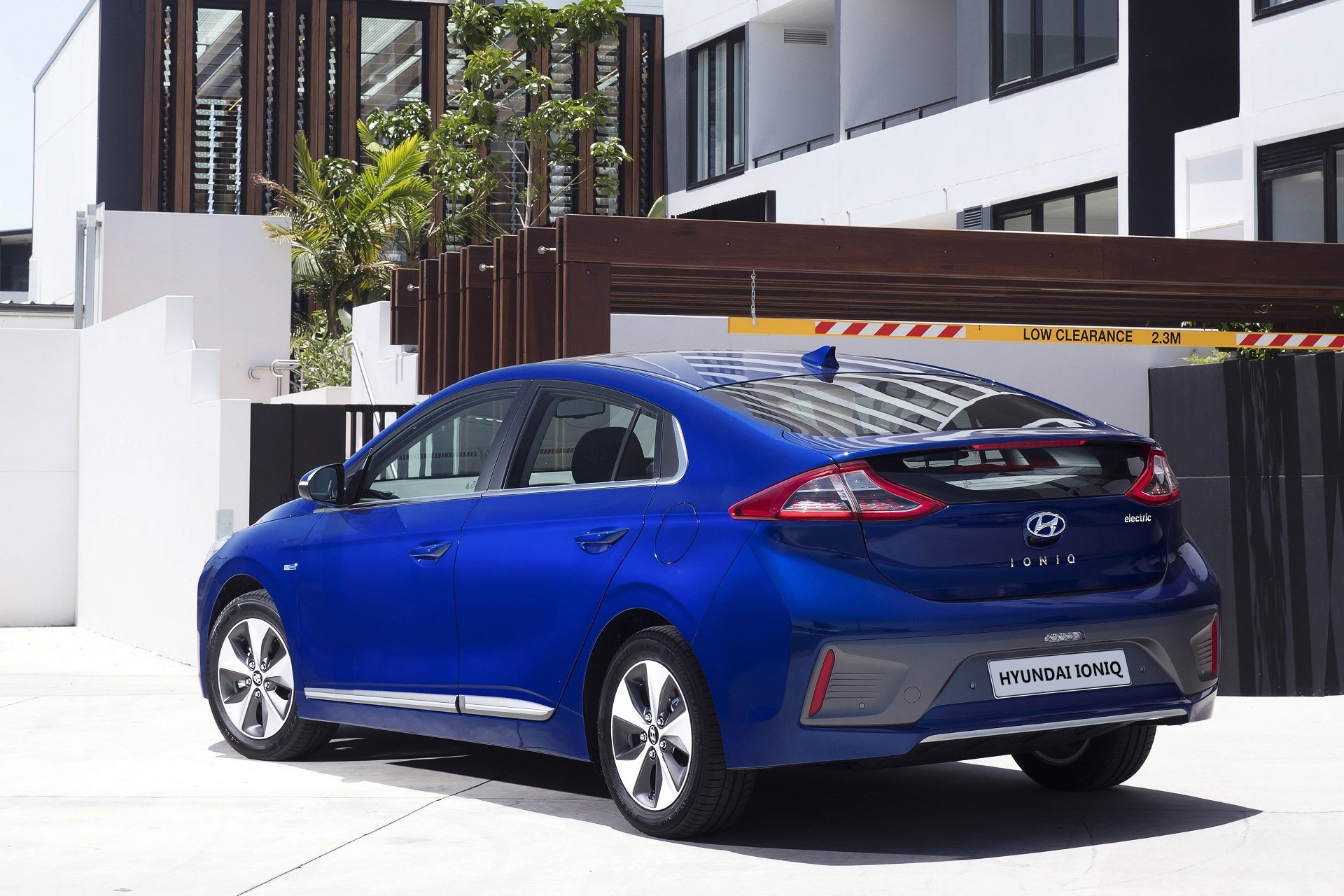Three shades of green driving
 With the introduction of Hyundai’s Ioniq, the EV price tag is looking lower than ever.
Delivering three stages of green driving, Hyundai’s Ioniq range includes the “light green” petrol/electric hybrid (starting at $33,990), the “green” plug-in PHEV range-extending petrol model (starting at $40,990) and the “dark green” full battery electric BEV model (starting at $44,990, with a usable real-world battery range of around 230km).
With the introduction of Hyundai’s Ioniq, the EV price tag is looking lower than ever.
Delivering three stages of green driving, Hyundai’s Ioniq range includes the “light green” petrol/electric hybrid (starting at $33,990), the “green” plug-in PHEV range-extending petrol model (starting at $40,990) and the “dark green” full battery electric BEV model (starting at $44,990, with a usable real-world battery range of around 230km).
Specs

Value for money
Hyundai have fitted-out and priced the Ioniq to be a real challenger to established electric players such as the Toyota Prius and the soon-to-be-released Nissan Leaf. Their keen pricing and safety kit will be a game changer for this part of the small but evolving hybrid and EV market. The Ioniq is packed with EV tech, in-car connectivity and active safety features, including an advanced forward collision warning system and blind spot monitoring. The Ioniq comes with a 5 year unlimited km warranty and an 8 year or 160,000km high-voltage battery warranty.
Charging the Hyundai Ioniq.
Design and function
Hyundai have tried to make the Ioniq look non-polarisingly normal so they don’t have the styling push-back Toyota’s Prius went through. The Ioniq is built on the Hyundai Elantra platform, but that’s where the similarities between the two vehicles end. The Ioniq is designed to be charged from a home power outlet, which is where the bulk of charging will take place. It takes 11 hours to fully charge from empty, but for an additional $2000, you can purchase an in-home charger that will cut this time down to 4.5 hours. The PHEV’s smaller battery only takes 3 hours to charge, and through a commercial 100kW DC fast charging station, the electric model can be charged up to 80% in as little as 23 minutes. As a side note, Hyundai are working on a plan to recycle LG-made batteries in Australia. The air-cooled hybrid battery is located under the rear seat, whereas the EV battery takes up the same space plus some of the boot area. This intrusion of space accounts for the decision to not include a spare tyre. Instead, an inflator kit is provided. Love ‘em or hate ‘em, the Ioniq has a foot-operated park brake in all models except the EV.
Hyundai Ioniq rear view.
On the road
The Hybrid, with its 1.6L GDi Atkinson cycle petrol engine, 6 speed dual-clutch automatic transmission and electric motor, performed adequately, as did the PHEV model. The BEV has 3 drive modes: Normal, Eco and Sport. In Normal mode, the Ioniq drives like a normal car. Eco mode smooths out throttle response and torque delivery to maximise efficiency, and limits the overall power available. Sport mode increases steering weight, sharpens throttle response and torque delivery, unlocking the motor’s full 295Nm. All 3 models have had their suspension Australian-ised, with 2 setups offered: one for the hybrid and another for the other models. Both did the job adequately. Having the mass of the battery low-down in the chassis helps with the car’s handling.Need car advice?
RAA members can call our free Technical Advisory Service for answers to their car questions.
Or call 8202 4689

